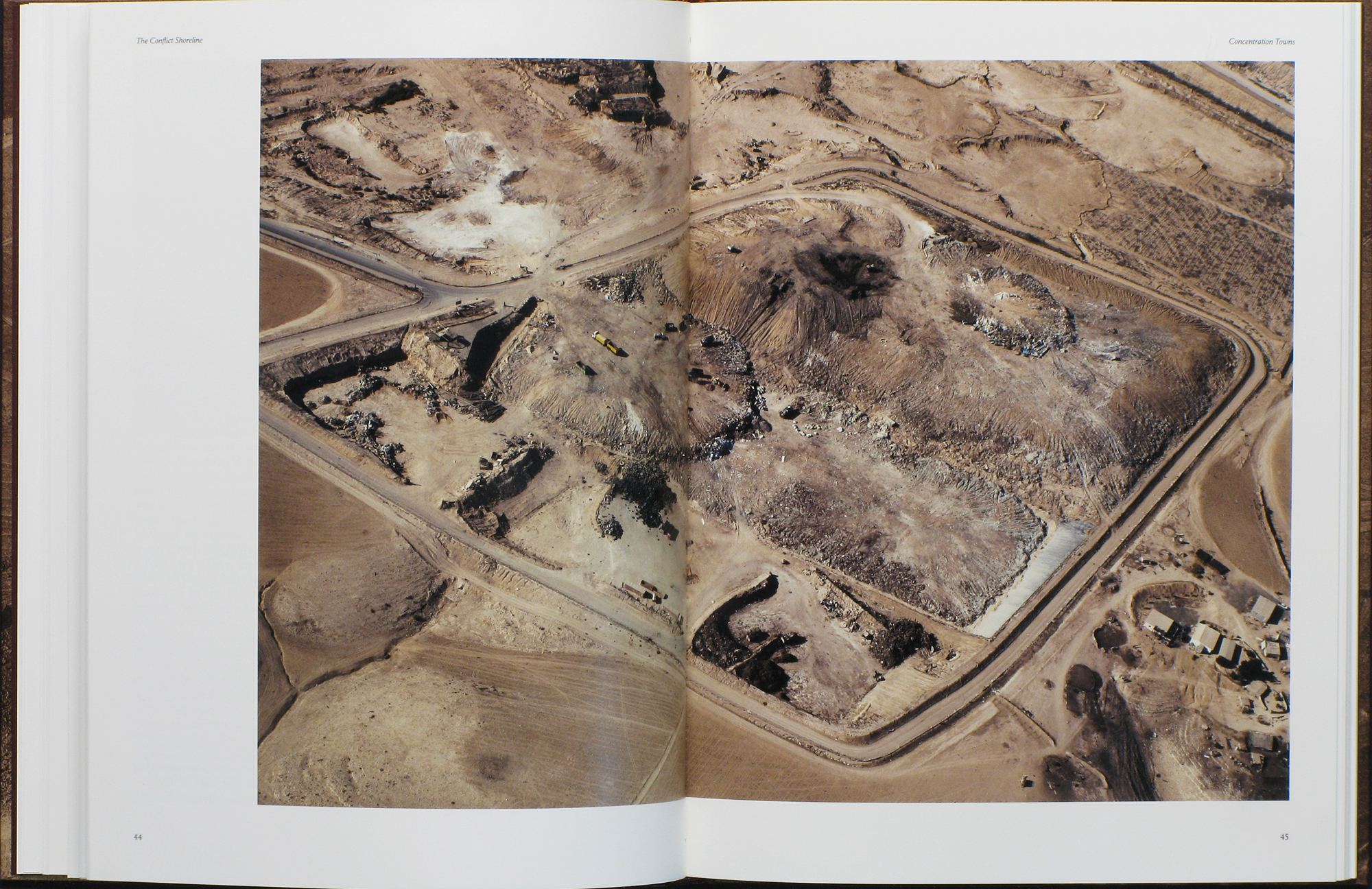*The Conflict Shoreline*, best non-fiction book of the year
For best non-fiction book of the year, a late entry swoops in to take first place! That’s right, I am going to select The Conflict Shoreline: Colonization as Climate Change in the Negev Desert, by Eyal Weizman and Fazal Sheikh.
This is an unusual book. It is only 85 pp. of text and about half of it is aerial photos and maps. It covers the history of the Negev desert, the Bedouin, Israeli policy toward the Bedouin, ecology, seed botany, and the roles of water policy and climate change, all in remarkably interesting and information-rich fashion, with a dose of Braudel and also Sebald in terms of method.
For one thing, it caused me to rethink what books as a whole should be. This is one cool book.
To make it stranger yet, this book is Weizman’s response to Sheikh’s The Erasure Trilogy, which is structured as a tour of the ruins of the 1948 conflict. That book is I believe from a Palestinian point of view, and described as a “visual poem.” I just ordered it; note that Sheikh is the photographer for The Conflict Shoreline and thus listed as a co-author.
Some will read The Conflict Shoreline as “anti-Israeli” in parts, but that is not the main point of the book or my endorsement of it. The book however does point out that Israeli policies toward the Bedouin often were prompted by a desire to remove large numbers of them from their previous Negev land and move them into the West Bank and Egypt. I had not known “The village of al-‘Araqib has been destroyed and rebuilt more than 70 times in the ongoing “Battle over the Negev””. The book ends with a two-page evidentiary aerial photo of that village, taken during 1945; other photos of it date as far back as 1918. This is all part of Weizman’s project of “reverse surveillance.”
It is a hard book to summarize, in part because it is so visual and so integrative, but here is one excerpt:
The Negev Desert is the largest and busiest training area for the Israeli Air Force and has one of the most cluttered airspaces in the world. The airspace is partitioned into a complex stratigraphy of layers, airboxes, and corridors dedicated to different military platforms: from bomber jets through helicopters to drones. This complex volume is an integral part of the architecture of the Negev.
And then it will move to a discussion of seed technology, or how Bedouin economic strategies have changed over the course of the twentieth century, and how these various topics fit together. Think of it also as a contribution to location theory and economic geography, but adding vertical space, manipulated topography, rainfall, and temperature to the relevant dimensions of the problem.
Too bad it costs $40.00. Recommended, nonetheless. Here is one review, here is another, the latter having especially good photos of the book’s photos.
Here is a good interview with Weizman, who among other things outlines his concept of Forensic Architecture.
Here is my earlier post on the best non-fiction books of 2015. And here is an earlier post the best books under one hundred pages.
